Roadmap or OKR?
17 de October, 2017Why context is so important in software development
26 de November, 2017This is a frequent question that all product managers have. Whether it’s a new product or a fully operating product, full of user suggestions, how to prioritize, that is, how to decide what to do first?
There is a good amount of techniques. I’ll talk about a few here and, in the end, I’ll tell which one is the best. I only ask you not to jump to the end of this article so you won’t ruin the surprise! 😛
Value versus cost
One of the simpler ways of prioritizing a roadmap is making an analysis of all items, seeking to estimate the value (benefit) of each one for the business and for the users, and the cost of implementing each item. With these data on your hands, it is possible to even build a graph with two axes and put each and every one of the items in it based on the value and cost. The idea is to always prioritize what has the bigger value and lower cost, for the benefit will be obtained more quickly.
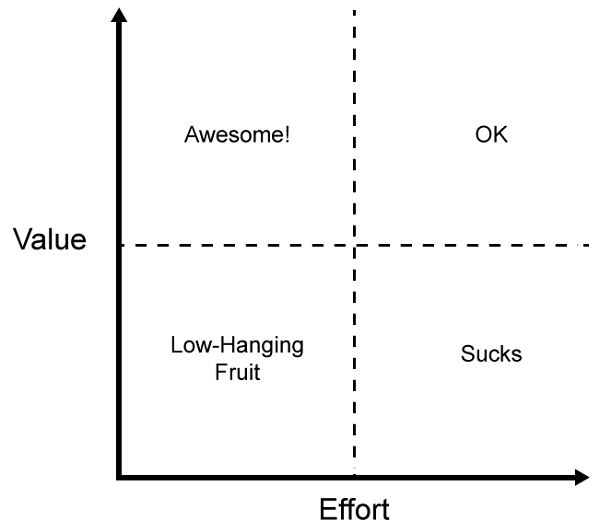
Kano Model Analysis
Kano Model was created by professor Noriaki Kano, from Tokyo University, to classify the items of a product based also in two dimensions, the need of an item and the excitement that it provides to clients. With this, it is possible to classify the items in three types: basic; satisfiers and delighters.Â
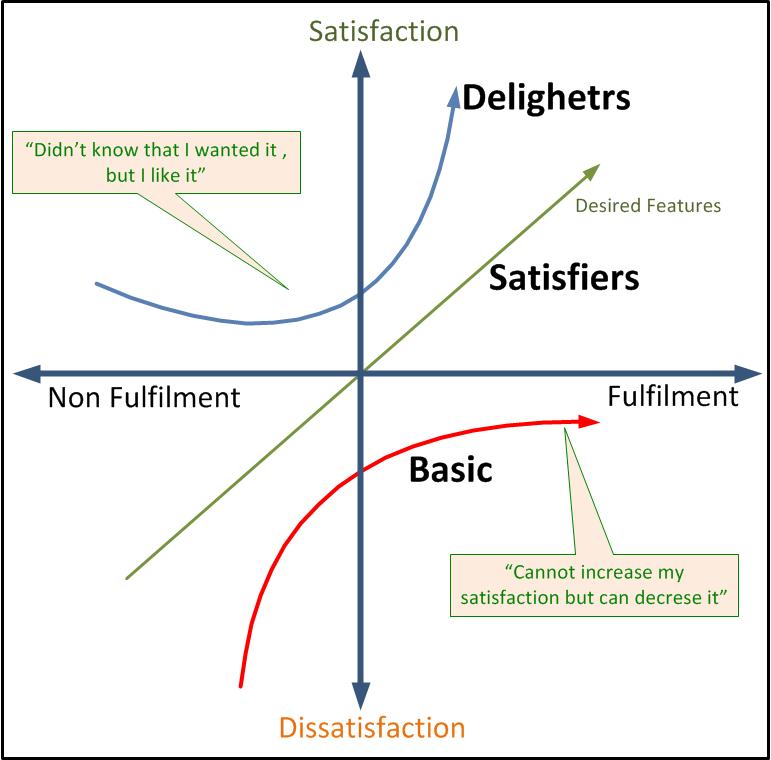
For instance, in a car, the wheel is a basic item, for there is no car without wheels. Sunroof is a satisfier item, if your client does not consider it valuable. Being very silent is an item that delights a client that appreciates silence. The recommendation is to have all basic items, some satisfiers, but do not leave some delighters out if you want to positively impress your client.
Feature Sequencer
Feature Sequencer was created by Paulo Caroli, from ThoughtWorks, to plan a product based on deliverables, and its features. The sequencer rules – such as three cards per line – foster the prioritization conversation.
According to the To The Point book, the Feature Sequencer helps you organize and visualize the features and its relation to the deliverables. The sequencer organizes and plans the product releases beyond the first deliverable. Typically, teams using the feature sequencer will dazzle the product evolution via a clear understanding on the features contained by each deliverable, and the release order.Â
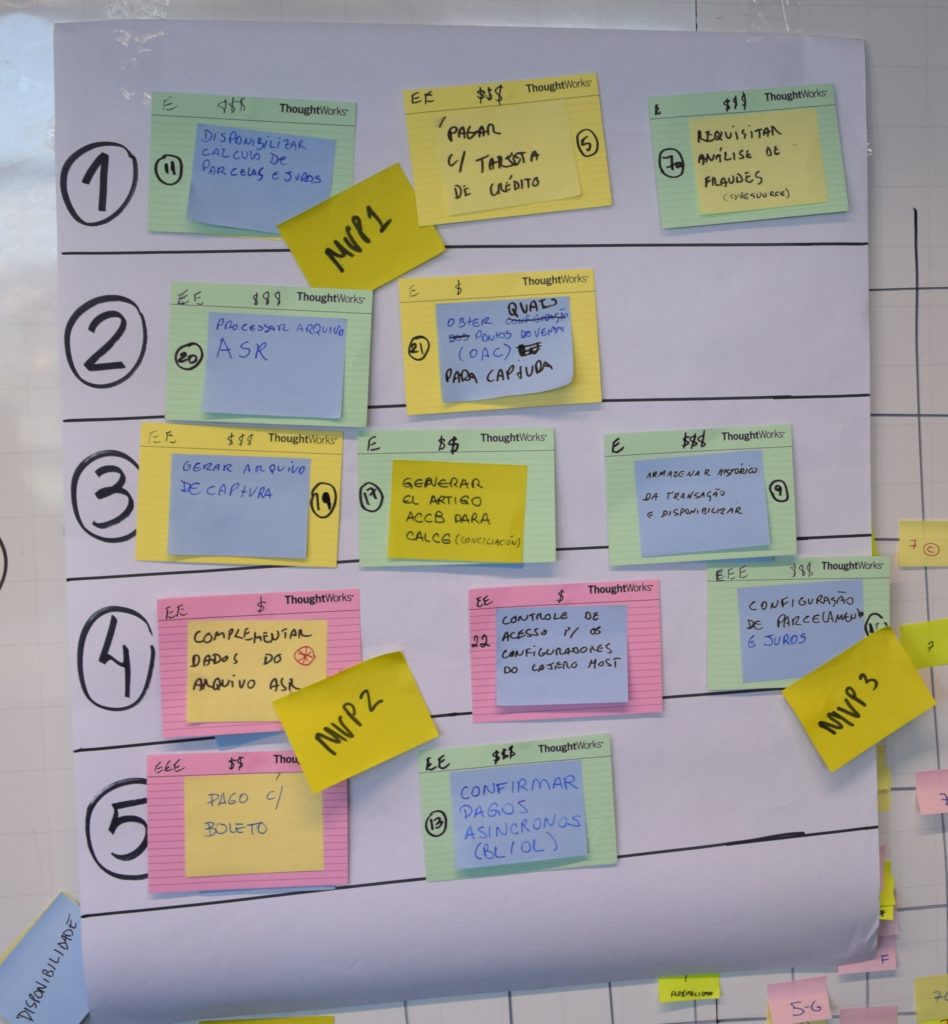
The previous image has a sample feature sequencer; each feature is represented by an index card. The post-its on the right hand side represent the deliverables.
Product tree
The idea is kind of like the Kano analysis: classifying items of the roadmap according to the parts of a tree. Roots are the infrastructure; the stalk provides support; the branches are the different paths in which you can put your product in; the leaves are the features themselves; and the flowers and the fruits are the features that are going to delight the customer. Every product has to have roots, stalk and some branches with their respective leaves, but itís important to always add on some flowers and fruits in order to make your product delightful.
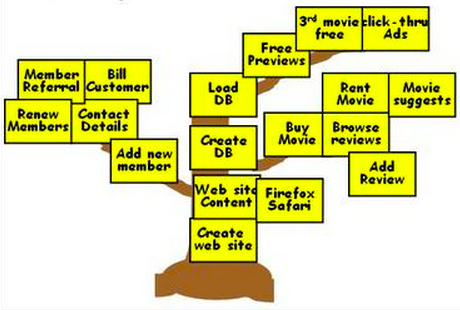
Buy your features
In this technique, you make everyone play a game. You show all the items in your roadmap and set a value for each one based on how is going to cost to build it. Then, invite some clients and tell them they have X to spend. This X must be substantially less than the sum of the value of all your items.
With this X, each client has to ìbuyî the most important features and, as the money is limited, everyone is forced to make choices such as “Do I take these two features or trade them for this more expensive one?”. It is a very interesting exercise and provides a good knowledge on client behavior.
From time to time we use this technique at ContaAzul and it is interesting to watch customer having to deal with prioritization decisions like we, product managers, do every day.
UserVoice
UserVoice is a suggestion system that you can put in your product. With this, your user will be able to make suggestions about it, and will also be able to vote for suggestions from other users. You can still limit the amount of votes, forcing them to make choices, like in the previous method.Â
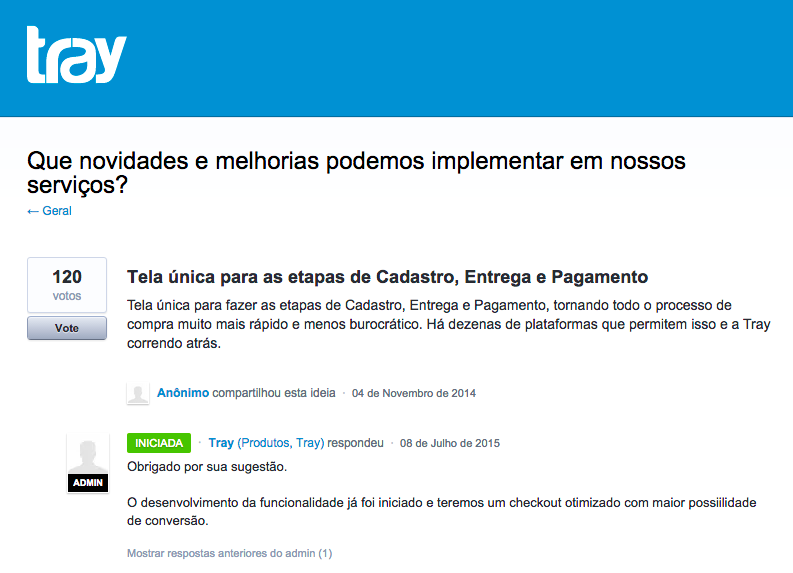
Besides UserVoice, there are other options available like HelpRace.
RICE
RICE is an acronym for the four factors we use to evaluate each project idea: reach, impact, confidence, and effort. Reach: how many people will this impact? (Estimate within a defined time period.) Impact: how much will this impact each person? (Massive = 3x, High = 2x, Medium = 1x, Low = 0.5x, Minimal = 0.25x.) Confidence: how confident are you in your estimates? (High = 100%, Medium = 80%, Low = 50%.) Effort: how many “person-months” will this take? (Use whole numbers and minimum of half a month – don’t get into the weeds of estimation.)
Once you’ve estimated these factors, combine them into a single score so you can compare projects at a glance. Here’s the simple formula:
RICE Score = Reach x Impact x Confidence / Effort
The one you remember first
I really like this one for its simplicity. Jason Fried, founder of 37signals – currently called Basecamp, said on his book Getting Real that in his company the option was to prioritize based on remembrance. They receive several suggestions everyday, and simply decided not to write them down so they won’t spend time counting and classifying them.
As suggestions come up everyday, they hear them everyday. From time to time, they get together and discuss about the suggestions they remember, and these are the ones that are approached and eventually prioritized in the products roadmap.
The best prioritization technique
As you can see, there are many ways of prioritizing a roadmap, all very useful. In other words, what we can conclude is that if there are so many ways of prioritizing a roadmap and if all prioritizing ways can be useful, it means that the prioritizing a roadmap is not an exact science.
We have an eager for finding a prioritization method that justifies our choices. However, every time this method fails in a certain item that we are sure it is best to do it before (or after) than the method tells us to do, we end up tempted to follow our certainty, ignoring and not following the method.
However there are several roadmap prioritization techniques and methods, the best method is common sense. That is, the ability the product managers have of analyzing the available options and, using their empathy, they prioritize these options taking into account the companyís goals and the users’ needs.
Digital Product Management Books
Do you work with digital products? Do you want to know more about how to manage a digital product to increase its chances of success? Check out my Digital Product Management bundle with my 3 books where I share what I learned during my almost 30 years of experience in creating and managing digital products:
- Startup Guide: How startups and established companies can create profitable digital products
- Product Management: How to increase the chances of success of your digital product
- Leading Product Development: The art and science of managing product teams

